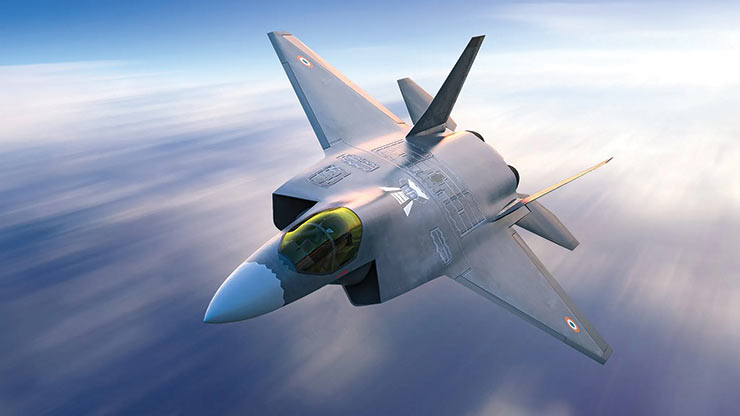
New Delhi: In a significant development, the project to design and develop the Advanced Medium Combat Aircraft (AMCA) fifth generation stealth fighter jet was approved by the Cabinet Committee on Security (CCS) on March 7, 2024.
According to sources, under the project estimated around Rs 15,000 crore, Defence Research and Development Organisation’s Aeronautical Development Agency would develop the stealth fighter jet and its technologies in partnership with various private and public sector agencies and build around five prototypes in around five years. The project would see the prototype manufactured by industry including the public sector unit Hindustan Aeronautics Limited.
Under the Narendra Modi government, indigenous fighter aircraft projects have received a major boost from the Indian Air Force as the government has ordered over 200 Light Combat Aircraft along with clearance for engines for the LCA Mark-2 project. The government has been working towards the development of indigenous technologies and the military industry. The Defence Ministry envisages that the fifth generation aircraft project would generate jobs on mass scale and the Indian Air Force orders can generate business worth lakhs of crores for Indian entities.
The Advanced Multirole Combat Aircraft (AMCA), a fifth-generation fighter jet, is slated to take flight by 2028, featuring cutting-edge technologies like stealth capabilities, AI integration, long-range targeting, and compatibility with unmanned systems. The aircraft is planned to be inducted into operational roles after 2030 and could potentially lead to the development of future generations of fighter jets in India.
There are only four operational fifth generation fighters in the world currently, with the Americans having two — F-22 Raptor and F-35A Lightning II. The Russians boasting the Su-57 and the Chinese have the J-20, though their stealth technology is not fully recognised. Similarly, the fifth generation credentials of Chinese J-31 fighters are questionable so far.
Expected to start getting inducted in operational roles beyond 2030, AMCA’s first two squadrons are planned to be powered by the GE-414 engines while discussions are still on to co-develop more powerful engines for the remaining squadrons. India is likely to induct over 200 of these powerful fifth-generation fighters and the planes would also help India to develop future generations of fighter jets within the country.
Earlier, India had tied up with the Russians for the Fifth Generation Fighter Aircraft (FGFA) programme to develop a stealth fighter — Su-57 in 2007, even though AMCA was still being pursued as a concept note. Later, the Indian Air Force’s interest waned due to multiple reasons and India finally decided to pull out from the FGFA programme in 2018.
The first AMCA prototype powered by the GE-414 engine is earmarked for rollout by 2026, according to the plan. The IAF is looking at seven squadrons of the AMCA. The AMCA will boast of the latest avionics, indigenous AESA radar, besides having the capability to carry weapons internally as well as externally.















